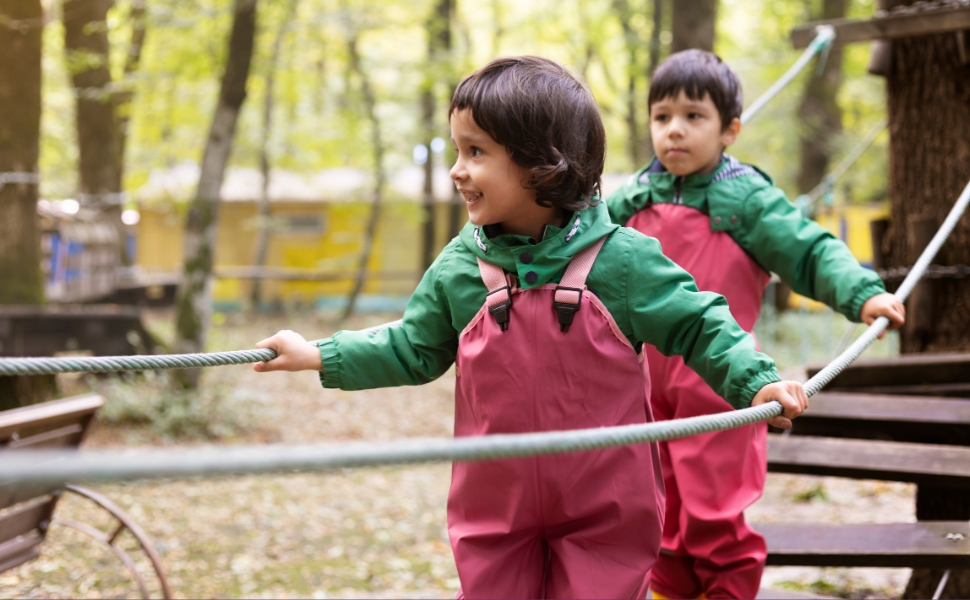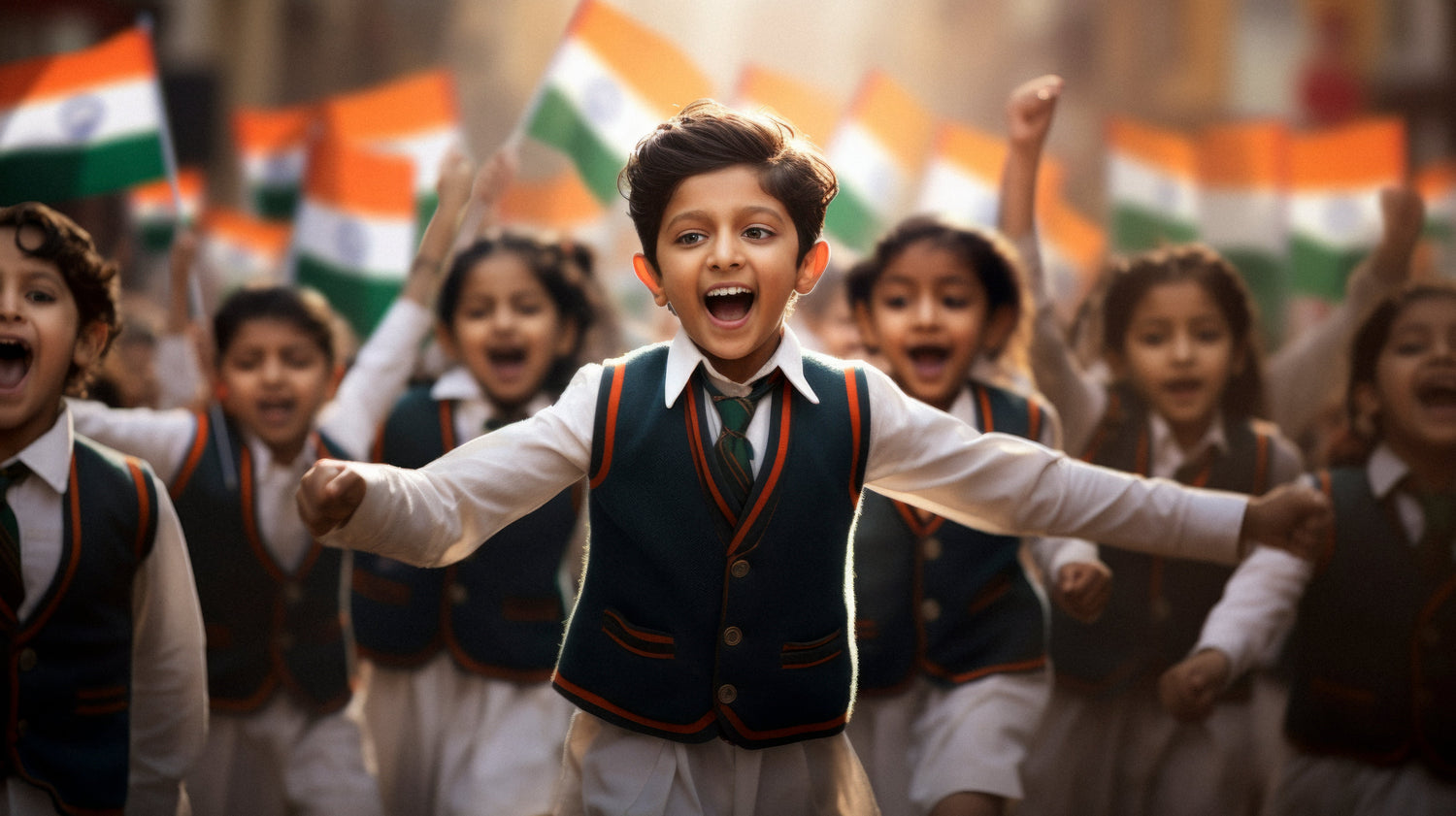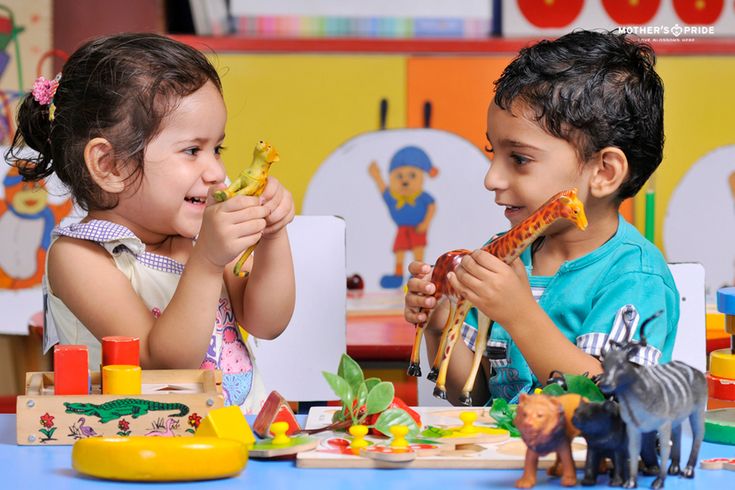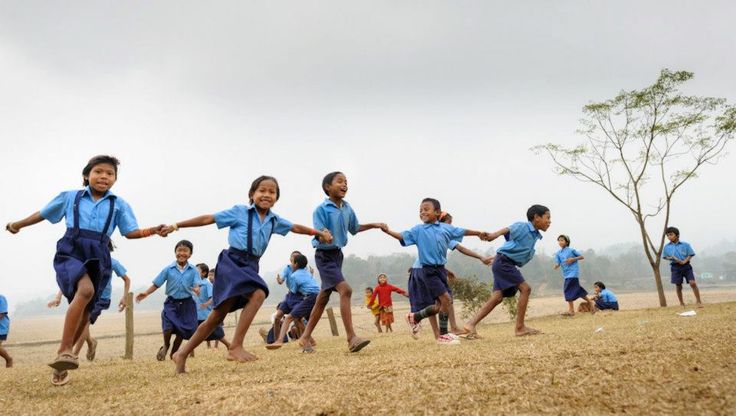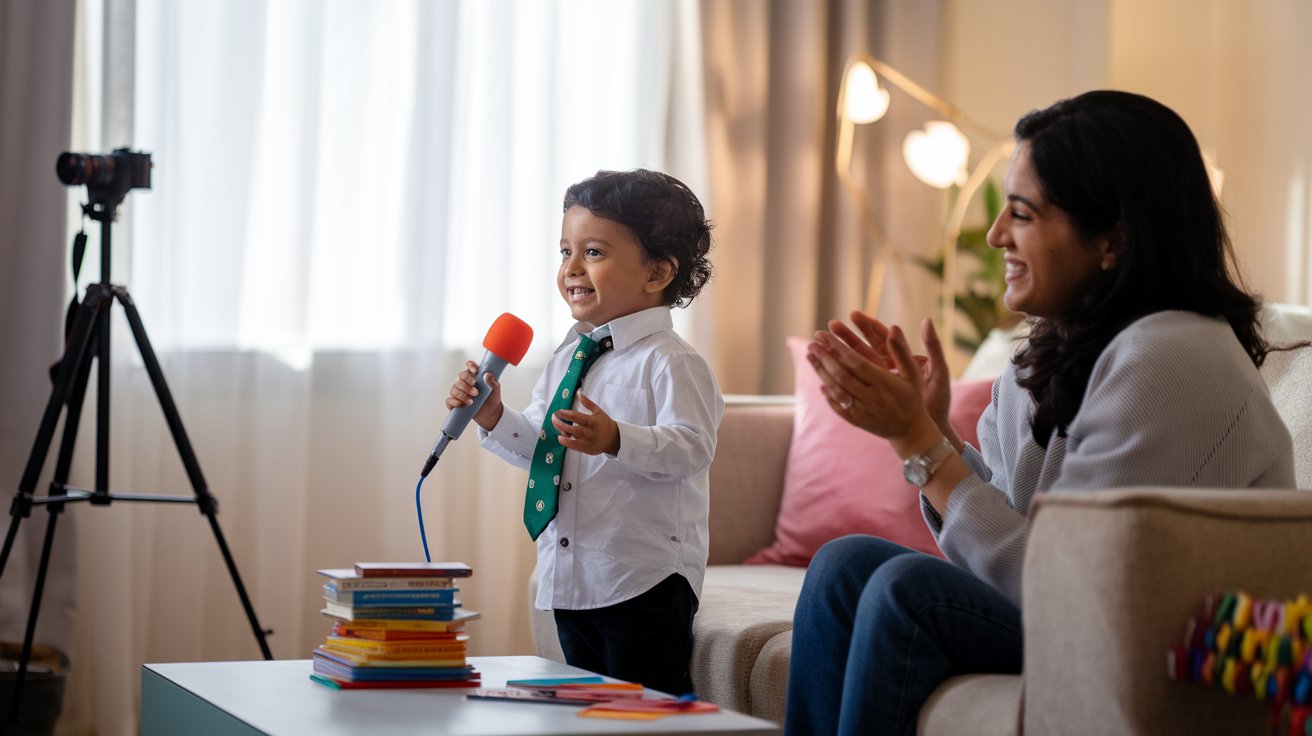In today’s digital age, getting children to engage in active play can be a challenge. But what if I told you that making time for active play is one of the most important things you can do for your child's growth? Active play is an essential part of a child's development. It goes beyond mere fun and games, laying the foundation for a healthy, happy life. When kids engage in active play, they don't just burn off energy; they build critical physical, mental, and social skills. Let's dive into the many reasons why active play is so important for children and how it can positively impact their growth and development.
1. Boost Physical Health:
The WHO recommends kids get at least 60 minutes of moderate to vigorous activity daily. Activities like running, jumping, and playing sports strengthen muscles, improve coordination, boost cardiovascular health, and prevent obesity. Playtime enhances balance and flexibility, laying the groundwork for a lifelong habit of physical activity.
Ways to Incorporate Active Play: -
Outdoor Play: Encourage your kids to play outdoors. Games like tag (pakdam-pakdai), hide-and-seek (chhupan-chhupai), and hopscotch (stapu) are great for physical activity. Did you know these traditional games are not only fun but also great exercise?
Sports: Enroll them in sports such as cricket, football, or swimming. These sports provide excellent cardiovascular workouts and help develop teamwork skills. Have you noticed how children naturally learn to coordinate and strategize when playing cricket?
Toys to Encourage Active Play: -
Bicycles: Riding a bike is a fun way to exercise and explore the neighborhood. Remember the joy of your first bicycle ride? It's a timeless way to keep kids active.
Jump Ropes: Skipping ropes are fantastic for improving coordination and cardiovascular health. Encourage a skipping contest to see who can jump the longest!
Balls: Whether it’s a football, basketball, or tennis ball, playing with balls can enhance hand-eye coordination and teamwork skills. How about organizing a family football match on weekends?
2. Enhance Mental Well-being:
Active play releases endorphins, reducing anxiety and stress. It also improves concentration and focus, making children more attentive and ready to learn. This is why schools prioritize recess and PT, helping kids return to studies refreshed.
Ways to Incorporate Active Play: -
Mindful Movement: Activities like yoga or tai chi can help children relax and focus. Did you know that yoga, which originated in India, can be a fun and calming activity for kids?
Nature Walks: Exploring nature trails can be both physically stimulating and mentally refreshing. A walk in a local park or a hike in the hills can do wonders for a child's mood.
Toys to Encourage Active Play: -
Yoga Mats: Having a personal yoga mat can make kids excited to practice yoga. Try fun animal poses together!
Nature Exploration Kits: Binoculars, magnifying glasses, and bug catchers can make nature walks more engaging and educational. Imagine the excitement of discovering a new insect or bird species!
3. Develop Social Skills:
Playing helps kids learn to cooperate, share, and solve problems. Activities like building sandcastles or playing cricket teach teamwork and communication, helping children make friends and feel included, which is crucial for their selfesteem and social skills.
Ways to Incorporate Active Play: -
Group Games: Encourage games that require teamwork, like relay races or group sports. Traditional Indian games like kabaddi and kho-kho are excellent for this.
Role-Playing: Games that involve role-playing, such as playing house (ghar-ghar) or store, help children practice social interactions.
Toys to Encourage Active Play: -
Board Games: Games like Monopoly or Scrabble teach kids to take turns and strategize. How about introducing them to Indian classics like Carrom and Ludo?
Building Blocks: Toys like Lego or wooden blocks encourage cooperative play and problem-solving. Building a tower together can be a great bonding activity. - Soft Toys: Soft toys can be integrated into role-playing games, helping kids act out scenarios and learn social cues.
4. Encourage Creativity and Imagination:
Active play boosts creativity and imagination. Simple games like "ghar-ghar" turn into adventures, enhancing thinking skills and helping kids see things from different perspectives.
Ways to Incorporate Active Play: -
Imaginative Play: Encourage dress-up games or storytelling activities. Ever seen your child transform into a superhero or a princess? That's their imagination at work!
Creative Arts: Activities like drawing, painting, or crafting can also involve physical movement. Set up a little art corner at home and watch their creativity flow. Toys to Encourage Active Play:
Costume Sets: Dressing up as different characters can spark imaginative play. Think about how a simple dupatta can turn into a royal cape or a sari.
Art Supplies: Easels, paints, and clay can encourage creative expression through movement. Try making eco-friendly clay Ganesha idols during festivals!
Wooden Toys: Puzzles and building sets made of wood can stimulate creativity while offering a tactile experience that plastic toys often can't.
5. Building Resilience and Confidence:
Active play builds resilience and confidence. Trying new activities and overcoming challenges, like learning to ride a bike or playing kho-kho, teaches kids perseverance and self-belief, preparing them to tackle life's challenges.
Ways to Incorporate Active Play:
Adventure Activities: Activities like climbing, hiking, or obstacle courses challenge kids to push their limits. Remember your childhood treeclimbing adventures? Encourage them to explore safely.
Skill-Based Games: Encourage games that require practice and skill development, such as marbles (kanche) or kite flying. The joy of flying a kite during Makar Sankranti is unparalleled!
Toys to Encourage Active Play:
Climbing Frames: Playground equipment like climbing frames or monkey bars build strength and confidence. If you have space, consider installing a small climbing wall at home.
Kites: Flying a kite involves coordination and patience, rewarding kids with a sense of accomplishment. Introduce them to the vibrant kite festivals in India!
Wooden Toys: Balancing beams and stacking toys can improve physical coordination and provide a sense of achievement as kids master new skills
Incorporating Family Playtime
Active play isn't just for kids – it's a great way for the whole family to bond and stay healthy together. Plan regular family playtime, whether it's a game of tag in the backyard, a bike ride around the neighborhood, or a dance party in the living room. These activities create lasting memories and reinforce the importance of an active lifestyle. Remember, you don't need fancy equipment or a lot of space to create a fun and active play environment. The most important thing is to encourage your child's natural curiosity and desire to move. By providing a safe, stimulating, and supportive play environment, you're setting the foundation for a lifetime of health, happiness, and creativity.
Conclusion
active play is vital for children's physical, mental, and social development. By understanding its importance and creating environments that encourage movement and creativity, we can help our kids thrive in every aspect of their lives. So, the next time you see your child running around, playing a game, or building an imaginary world, know that they're doing much more than just having fun – they're growing, learning, and becoming the best version of themselves.


